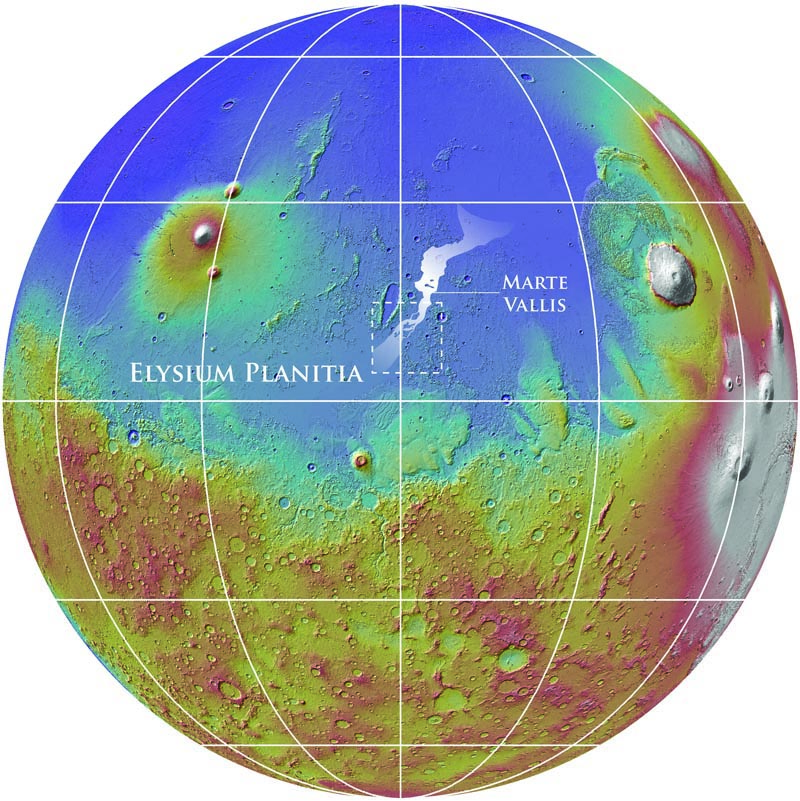Massive floodwaters on Mars gouged a channel more than 600 miles (1,000 kilometers) long, making a trench that was hidden to scientists until now because volcanic flows buried it underground.
Erupting groundwater, perhaps triggered by a volcano or an earthquake, forced water across the surface during the past 500 million years. This carved a trench about 62 miles (100 kilometers) wide; it would take runners more than two marathons (at 26 miles each) to cross the expanse.
Later, as volcanoes erupted in Mars' Elysium Planitia plain, lava flows covered the channel. The trench, now called Marte Vallis, finally came to light from radar measurements by an orbiting spacecraft. The results were published in the journal
Science
Thursday.
"This work demonstrates the importance of orbital sounding radar in understanding how water has shaped the surface of Mars," stated Gareth A. Morgan, the paper's lead author and a geologist at the National Air and Space Museum's Center for Earth and Planetary Studies.
Scientists stumbled on the trench using the radar capabilities of NASA's Mars Reconnaissance Orbiter and its Italian-made
Mars SHAllow RADar sounder, also known as SHARAD
, designed to pick up ice and water underground. The instrument has a horizontal resolution of between 0.3 and 3 kilometers (between 2/10 of a mile and almost 2 miles) horizontally and 15 meters (about 50 feet) vertically.
SHARAD revealed that the largest or main channel was 370 feet (113 meters) deep, which is skyscraper height.
"This is comparable with the depth of incision of the largest known megaflood on Earth, the Missoula floods," the paper stated, referring to bursts of water that swept across western North America after the last ice age, some 12,000 to 18,000 years ago.
Mars today is considered pretty dry, save for the water that is
locked in the ice caps
at the north and south poles. In recent years, however, several spacecraft and rovers revealed ancient signs of water at various points in the past.
The Curiosity rover
found a streambed
where hip-deep water flowed, while the Spirit and Opportunity rovers analyzed rocks such as hematite "
blueberries
" that form in wet conditions. From above, orbiters with NASA and the European Space Agency regularly take pictures of ancient channels and
water carvings
on the surface.
This is the first time scientists found a trench underground, however.
"Understanding Marte Vallis is essential to our assessment of recent Mars hydrologic activity during a period otherwise considered to be cold and dry," the paper stated.
Sources:
Smithsonian
,
Science
 Universe Today
Universe Today
